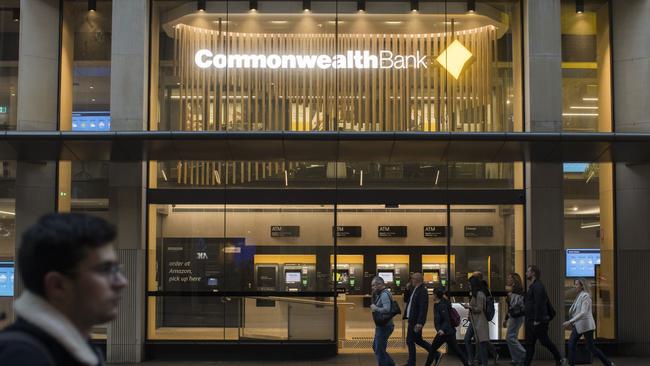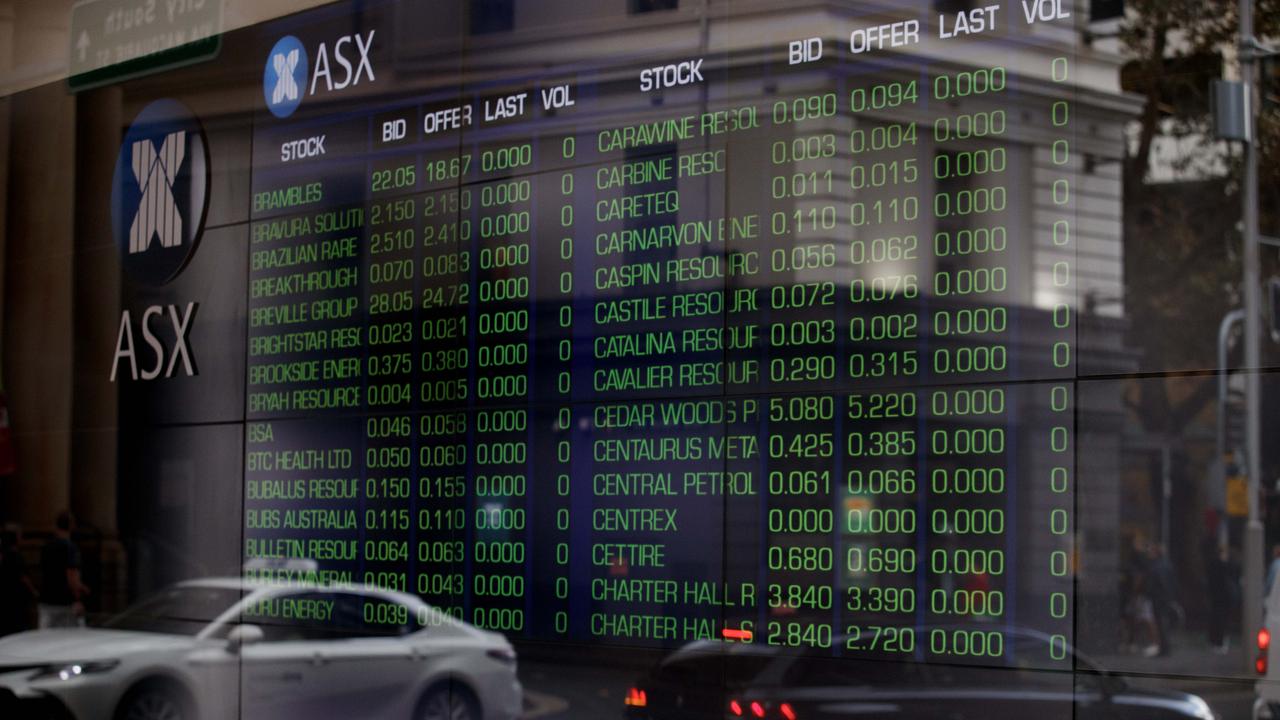CBA home loan customer hardship up 20pc but CEO optimistic on economy
Commonwealth Bank’s home loan customers facing financial hardship have soared to more than 7000, CEO Matt Comyn said after the bank posted a slight fall in interim profits.

Business
Don't miss out on the headlines from Business. Followed categories will be added to My News.
Commonwealth Bank’s home loan customers facing financial hardship have soared to more than 7000, as rising living costs squeeze budgets, CEO Matt Comyn said after the bank posted a slight fall in interim profits to $5bn, as higher funding costs and competition hurt margins.
The nation’s largest lender on Wednesday reported a 3 per cent fall in cash earnings for the six months to December 31 to $5.02bn and a dividend of $2.15 a share. This was broadly in line with expectations, but clouded by slightly thinner than expected interest margins.
It disappointed investors, who pay one of the most expensive prices for CBA shares when compared with the shares of other banks in the world.
The economy continued to show resilience in the face of weathering the most aggressive rate rises in decades, Mr Comyn said. However, an increasing number of households were feeling the pinch of the rising cost of living and were cutting back spending to adjust, in turn hurting businesses.
During the year, the bank had seen an increase of about 20 per cent in the number of home loan customers experiencing hardship to more than as of December 31, Mr Comyn said.
But even as he acknowledged the ongoing financial strain for households and businesses, Mr Comyn said the bank had not become more apprehensive about the overall economic outlook, and expressed optimism.
“Some households are absolutely feeling the pressure from higher prices across the economy,” he said. But that was a tiny fraction of CBA’s customer base.
“We fully expected the economy may slow over the course of the year, but we feel very well-prepared for a range of economic scenarios and of course to make sure that we’re supporting our customers throughout that,” he added.
CBA had contacted every customer coming off an ultra-cheap fixed-rate loan to offer “personalised pricing offers” to customers. And for those struggling, the bank was arranging loan repayment deferrals, customised payment arrangements and even a loan repayment suspension for those that required it, Mr Comyn said.
With consumer arrears expected to continue rising, bad debt provisions had also increased marginally to $6.06bn, reflecting ongoing pressures from higher costs of living and interest rates on households and businesses.
The bank wrote off a net $324m in loans during the half, which was a bit more than the $364m written off a year earlier. But as a proportion of gross loans and acceptances, the loan loss rate actually fell to 0.09 per cent, from 0.11 per cent in December 2022.
“The economy remains fundamentally sound and stronger than many international markets, and we remain optimistic about the overall outlook,” Mr Comyn said.
About eight out of every 10 home loan customers were ahead on their mortgage repayments, while more than 60,000 people had bought a home loan from the bank during the half.
“The job market remains tight with unemployment still near historic lows, with business investment and strong terms of trade. We recognise, though, that all households are feeling the impact of higher inflation and higher rates,” Mr Comyn said. “Consumer demand has slowed, but immigration is providing a structural tailwind for the economy.”

CBA shares fell 3.5 per cent following the profit announcement, before recovering slightly to close 1.66 per cent lower at $114.07. The result included a fully franked interim dividend of $2.15 a share, slightly below the $2.16 analysts had forecast but higher than the $2.10 interim dividend last year.
“Our lower cash profit reflects cost inflation and a competitive operating environment,” Mr Comyn said.
Operating expenses in the December half of $6.01bn were 2 per cent higher than in the previous six months and 4 per cent more than the $5.77bn in the same period last year.
But, as expected, it was interest margins that shrank the bank’s profit.
Net interest margins, a key measure of bank profitability intensely scrutinised due to higher than usual competition from some of CBA’s big four rivals and higher funding costs, dipped 0.06 percentage points to 1.99 per cent compared to the previous half.
This was slightly worse than analyst expectations for NIM to land at 2 per cent, and marked a 0.11 percentage-point decline from 2.1 per cent a year ago.
The bank blamed competition, a wave of customers switching to higher-yielding deposits, higher wholesale funding costs, and lower margins from its New Zealand unit for the margin squeeze.
Net interest margin in the retail banking unit – CBA’s largest – fell 0.08 percentage points to 2.54 per cent, from 2.62 per cent in the June half.
The Sydney-based lender has been careful to price its mortgages at rates that protect margins, even if that has meant losing some of its market share, which fell 0.05 percentage points since June to 25.3 per cent as of the end of December.
The bank has lowered its rates slightly in the past few months to defend its market share, but it has visibly signalled its willingness to step out of the market if returns become too low.
Home loan sales increased only 2 per cent in the year to December, or less than half the 4.2 per cent growth in the system.
Instead, CBA has targeted the business lending market, where it has invested significantly in recent years to compete with the incumbent leader National Australia Bank.
Business lending increased 6.7 per cent in the year to December, outpacing the system slightly. Margins extracted from that business are higher than on home loans, but they also fell during the half to 3.44 per cent, from 3.52 per cent in June.
Brokers at Citi said that while CBA’s half-year numbers had the markings of a “good result”, with benign asset quality, solid core earnings and higher dividends, “we think this glosses over a deteriorating outlook”.
“It is clear that the bottom in earnings is not in yet,” said Brendan Sproules, who heads banking research at the US investment bank.
“We expect further NIM contraction. The market may like a ‘safe and reliable’ result today, but how long can CBA sustain falling earnings and rising dividends?”
Shares in the nation’s largest lender had rallied from levels in the mid-$90s in November to a record $118.24 last month, amid bets that interest rate cuts later this year would benefit the bank.
That is because an RBA cut gives banks the opportunity to keep part of the cut for their margins, and would potentially add to credit demand.
But with one of the most expensive prices for its shares among banks globally, the result is testing investors’ expectations embedded in its $190bn valuation.
When asked whether interest rate cuts would benefit the bank, even if a Labor government was unlikely to support banks pocketing any of the RBA cuts instead of passing them on to customers, Mr Comyn said he did not expect cuts until “late this calendar year”.
“There will definitely be some different factors obviously that are going to play out as part of that, but I think the rate cuts at least (will come) late this calendar year,” he said.
More Coverage
Originally published as CBA home loan customer hardship up 20pc but CEO optimistic on economy





